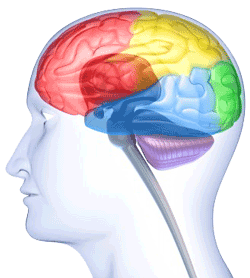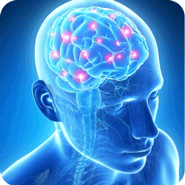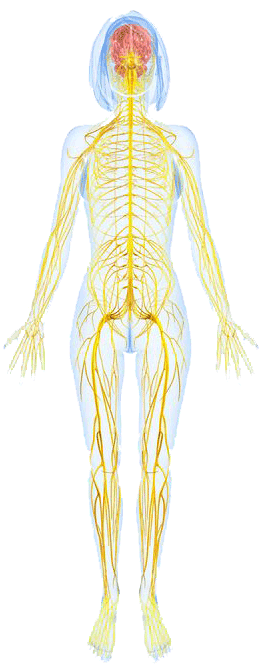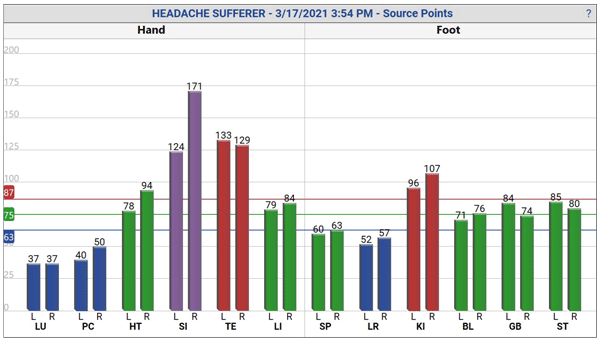Nerve Impulse Deficiency (NID) ™
And Your Nervous System

“You are only as healthy as your nervous system is functional” RAC
The power of this simple statement cannot be overemphasized.
Your nervous system controls and regulates every function of your body.
 Radio Show (ADR) – Could You Be Suffering From NID?
Radio Show (ADR) – Could You Be Suffering From NID?
The brain and spinal cord transmit and receive electrical nerve impulses to and from all the parts of the body. The nervous system can be likened to an extensive network of living wires.
Although this analogy is apt, it is not complete. In addition to the electrochemical impulses that are sent through nerve pathways, the nervous system is also an integral part of the body’s total energy system.
When it is in good working order and in electrical balance, optimal health abounds. The energetic health of the nervous system is doubly critical because it controls and maintains not only every part of the body, but the persons entire energy matrix as well.
Every cell, tissue and organ requires electricity (electromagnetic energy) to function. Where does this electricity come from?
Simply put, where there is life there is electricity. Since all matter is actually made up of energy of varying frequencies, and the matter that makes up the human body is itself made of energy, it is plentiful. From the point of conception on, electricity is present in your body in the form of electromagnetic energy. Thought, breath, movement, digestion and carrying out complex chemical processes, are all under electrical control.
The Job of Your Nervous System
Your nervous system is made up of hundreds of nerves and millions of nerve fibers. The job of this vast network of “living wires” is to carry electrical signals, composed of electrical nerve impulses, to and from all parts of your body.
NID™
Nerve Impulse Deficiency™ occurs when your body’s nervous system, for whatever reason, holds on to an altered firing pattern, repeats it automatically and fails to correct the situation on its own.
In other words, even when the stimulus is no longer present, the body continues to respond as if that stimulus still existed.
In that situation there is a breakdown of cell-to-cell communication, including nerve cell to tissue and organ cells, which will affect specific functions depending on the organ involved.

Nervous System Structures
Structurally, your nervous system is comprised of your brain, spinal cord and nerves. Your brain and spinal cord make up what is known as your central nervous system, and your spinal nerves make up your peripheral nervous system.
Your central nervous system is the place where all complex electrical information is processed.
Peripheral nerves (motor nerves) have the job of carrying processed information, in the form of electrical control signals, from your brain and spinal cord to all the muscles, tissues and organs of your body.
In the form of electrical regulatory signals, unprocessed information is carried back through other peripheral nerves (sensory nerves) in order to be processed by the brain and spinal cord.
A Healthy Nervous System
A healthy nervous system is both structurally and functionally sound. As with all parts of your body, nerves are made up of cells; all cells require vitamins, minerals, enzymes and other nutrients in order to be healthy.
Structurally healthy nerves are capable of freely carrying electrical information to and from all parts of the body.
The imperative word here is capable because a nerve must be both capable and electrically functional in order to be effective. Structurally sound nerves, however, are not necessarily functioning properly.
The functionality of a nerve has to do with timing and how effectively it transmits nerve impulses, or “fires”.
An Unhealthy Nervous System
An unhealthy nervous system is characterized by nerves that consistently over or under fire. As I mentioned previously, any number of factors can negatively influence a nerve’s ability to physically or functionally carry an appropriate nerve signal. Regardless of the cause, these deficient nerves result in a condition known as Nerve Impulse Deficiency, (N.I.D).
NID — What Causes It?
The cause of NID is that six letter word beginning with “S”- Stress!!
Some Types of Stress:
Emotional
Physical
Chemical
Nutritional
Environmental
Your body’s nervous system is designed to enable you to respond to various kinds of stresses. Your brain uses something known as neurological firing patterns to alter the amount of electrical energy being sent to specific muscles and organs depending on the stress at hand.

For example, when running out of the path of a speeding car, the nerves that go to the muscles in your legs will fire more rapidly to provide the increase in electrical energy needed for your leg muscles to function quickly and powerfully.
Simultaneously, nerves going to your digestive system will fire less rapidly, reducing the amount of electricity reaching those organs. In that moment, the priority is dashing out of the way of the car, not digesting your lunch.
For those of you who are familiar with this fight or flight reaction you’ll be aware that it involves the release of a chemical known as adrenaline.
The important point here is to realize that we now recognize that the transmission of electrical energy precedes the release of the adrenaline. The process is therefore electrical in essence which results in an electrochemical reaction.
This series of events is known as a fight or flight reaction. In a short period of time after this emergency situation is over, a healthy body will return to a state of electrical balance. In a sense, it will reset itself and all nerves will return to a normal firing rate.
However, in cases where the nervous system is not functioning optimally and/or when stresses occur with sufficient intensity and duration, your nervous system will continually be on alert.
Our bodies are designed to function in what is known as “survival mode”. That means that the body reacts perfectly to signals from its inner and outer environment 100% of the time.
If the stress does not cease then the body has no choice but to continue to be on alert. As an example, recurrent stressful or traumatic situations such as physical or emotional abuse—or the conscious or unconscious memories of that abuse—will in time cause altered nerve function, which will result in faulty firing patterns. Faulty firing patterns are synonymous with improper nervous system function and are the hallmark of NID.
Nerve Impulse Deficiency occurs when your body’s nervous system, for whatever reason, holds on to an altered firing pattern, repeats it automatically and fails to correct the situation on its own. In other words, even when the stimulus is no longer present, the body continues to respond as if that stimulus still existed.
In that situation there is a breakdown of cell-to-cell communication, including nerve cell to tissue and organ cells, which will affect specific functions depending on the organ(s) involved.

Identifying Nerve Impulse Deficiency, NID
There are any number of techniques and procedures inherent to the practice of non-allopathic healthcare that can adequately identify NID. The preferred method at our center is a procedure known as EMI. Electro Magnetic Imaging (EMI), is a safe, painless and effective way of electronically measuring the efficiency of the body’s nervous system.
Conditions such as N.I.D. can be easily identified, quantified, charted and interpreted. No other method affords such a clear picture of the workings of the peripheral nervous system.
By combining information from the art of Chinese Meridian Therapy, with that of Neurophysiology and Neuroanatomy, EMI gives us valuable insights into central nervous system function.
EMI Live Show – Ask Dr. Ron Radio Audio
